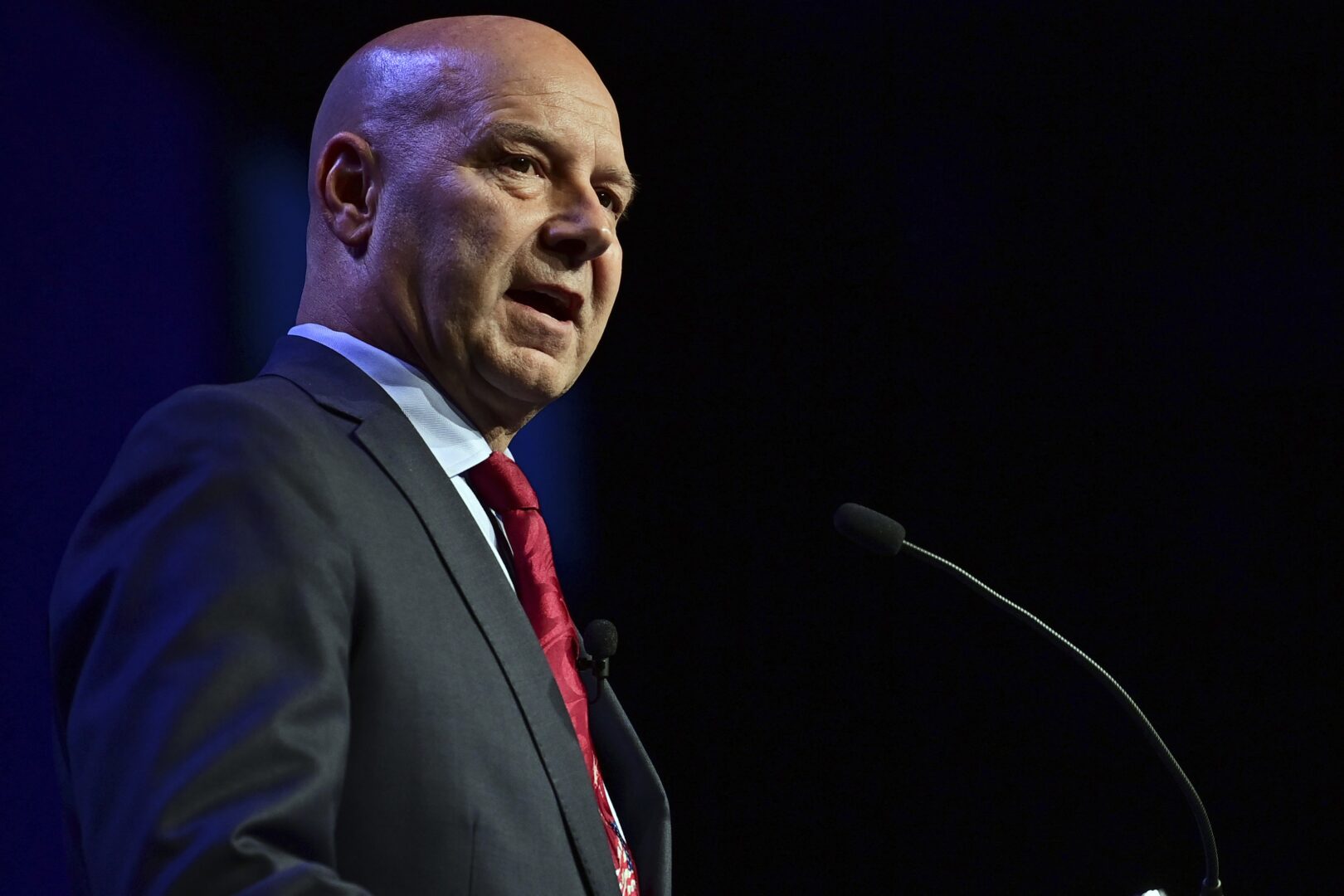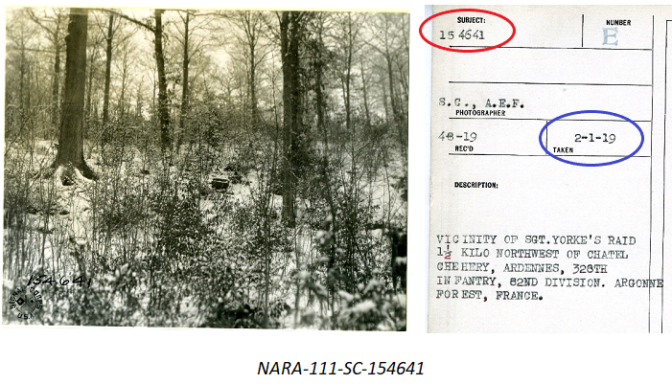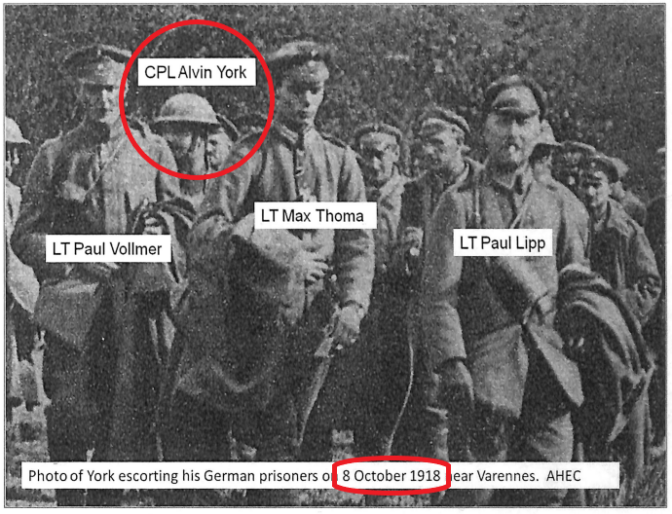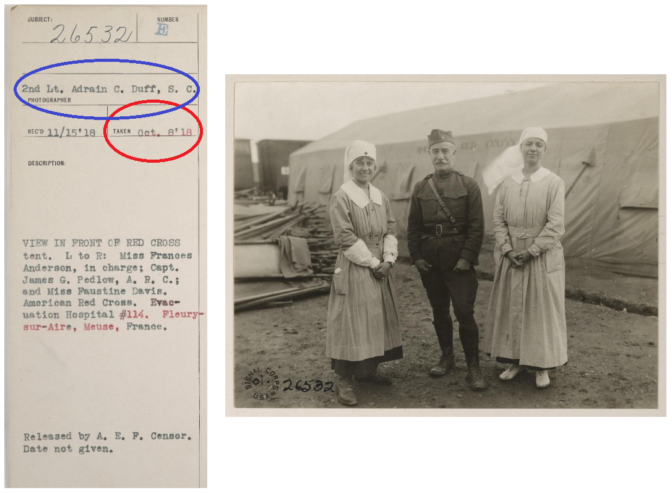
Republican gubernatorial candidate Doug Mastriano speaks during a campaign stop in Erie, Pa., Thursday, Sept. 29, 2022.
David Dermer / AP Photo

Republican gubernatorial candidate Doug Mastriano speaks during a campaign stop in Erie, Pa., Thursday, Sept. 29, 2022.
David Dermer / AP Photo

David Dermer / AP Photo
Republican gubernatorial candidate Doug Mastriano speaks during a campaign stop in Erie, Pa., Thursday, Sept. 29, 2022.
With the deadline passing this month for an investigation into state Sen. Doug Mastriano’s 2013 doctoral thesis, here is a detailed look at the issues underlying the allegations that prompted the probe.
The university has said it will not release the results of the investigation, and it is not clear whether that work has concluded. The university’s stance drew criticism from two researchers — one of whom was on the committee that approved Mastriano’s dissertation.
James Gregory, a University of Oklahoma PhD candidate, used Mastriano’s book, “Alvin York: A New Biography of the Hero of the Argonne,” in his own research about World War I icon Sgt. Alvin York in 2021 – and caught flak from other war historians because of alleged inaccuracies in the book.
Gregory submitted a report about Mastriano’s thesis to UNB, alleging that:
Gregory first began looking more closely at Mastriano’s research when a WWI historian, Brad Posey, pointed out what he said were errors in the caption of a photograph of German soldiers.
Posey declined an interview, but referred WITF to an article published by the Tennessee Historical Society.
“The few quotes from German archival documents found in the report are poorly translated; one entry even refers to events that occurred on October 9 — the day after the firefight,” Posey wrote.
“The maps found in the report are misconstrued as a result of [Mastriano’s] misunderstanding of the Humserberg, known to the Americans as the Cornay Ridge. In the report the author continuously depicts Hill 167 as the Humserberg, despite the fact that it can clearly be seen in archival documents that the Humserberg is not Hill 167.”
Gregory said the sources Mastriano cited in the photo caption didn’t support his facts.
“[A colleague] sent me German documents with court-appointed translations that show Mastriano is wrong,” Gregory said. “And that’s when I started to realize that if he’s wrong about even these German units, for someone that likes to wave in front of everyone’s face, ‘Well, I did research in Germany,’ what else is he wrong about?”
Mastriano did not return requests for comment, but he has previously claimed the academic fraud accusations are politically motivated.
“The left wing goes after our academic work on the right,” he said last year, when he was the Republican nominee for governor of Pennsylvania. “And I did have concerns that some of the left-leaning professors there would hold my politics or my military background against me.”
Mastriano represents the 33rd district, which includes Adams County and parts of Franklin County. He’s a retired United States Army colonel with over 30 years of military service, including deployments to Iraq and Afghanistan. He holds a Bachelor of Science degree from the United States Military Academy at West Point, a Master’s of Strategic Studies from the United States Army War College, and a Ph.D. in History from UNB.
He briefly considered running for Pa.’s open U.S. Senate seat next year, but did not have the support of Pa. Republican party officials and decided not to run. He lost the 2022 gubernatorial race by about 15 percentage points.
Gregory rebuts Mastriano’s defense.
“I live in Oklahoma. I’m a Republican myself. This is not about politics. I don’t care about what he’s doing in Pennsylvania. It has no effect on me,” he said. “I only care about the academics here. That’s the issue we need to really focus on.”
York is famed for his actions during the Meuse-Argonne offensive in France – the largest American operation of World War I.
During a mission on Oct. 8, 1918, U.S. Army records show York (a corporal at the time) lost most of his division to German gunfire, including all of the unit’s sergeants. Despite this, York led the remaining soldiers to victory, killing around 20 Germans, capturing 132 prisoners, and silencing up to 25 machine guns. His bravery resulted in a promotion to sergeant and the awarding of the Medal of Honor in 1919.
Gregory’s report, which cross-references official U.S. Army records, contends Mastriano misrepresented the battlefield location by cropping out the assigned photograph number on an Army Signal Corps photo and substituting the caption from a different picture.
Mastriano says the Army mislabeled its own photos. Gregory’s report shows an uncropped version of the photo that can be found in the Army archives, with a different identification number than Mastriano used in his thesis.

A close-up of a photograph used in Mastriano’s thesis with “Photo matches terrain” posted over the U.S. Army Signal Corps caption. (Doug Mastriano/UNB)
According to U.S. Army archives, the photograph Mastriano used in his dissertation was taken one day before the date Mastriano indicated.

Doug Mastriano’s labeled photographs contradict U.S. Army records, shown above. (U.S. Army Signal Corps)
Mastriano has rejected suggestions that the location is subject to debate, writing, “We know with certainty the location of the York action… [it] has been located and verified.”
Mastriano cited himself to support a mislabeled photo and urged the Army to use his caption

Photo from Mastriano’s thesis which labels a man as York; Army records contradict the caption. (Doug Mastriano/UNB)
Another dispute involves a picture Mastriano claims shows York with his prisoners of war.
In his dissertation, the photo is captioned: “Photo of York escorting his German prisoners on 8 October 1918 near Varennes.”
However, in Army records, that same photo is dated Sept. 26, and the caption reads: “Prisoners on way to P.C. 36th Division near 35th Division headquarters near Boureuilles, Meuse, France.”
There’s no mention of York.
Gregory said the photo could not have been taken on Oct. 8, because Army records show the Signal Corps photographer listed on the photo was at an evacuation hospital 15 miles away on that date.
Mastriano claims a clerical error caused a misprint of the photo’s original date, but he does not provide proof to support the claim.

Army Signal Corps photographer was elsewhere when York returned with his prisoners, according to this photo from the U.S. Army archives. (U.S. Army Signal Corps)
In an email to the U.S. Army Heritage and Education Center, Mastriano disputed the number of prisoners captured by the division and cited as a source his own book, which was largely based on his dissertation.
“The book, ‘Thunder in the Argonne,’ describes how the US 35th Division performed miserably in the opening days of the Meuse Argonne Offensive,” Mastriano wrote. “I know of no instance where a throng of more than 100 prisoners was brought in that included three officers in the front rank.”
However, the 35th Division histories published in 1919 show the division captured “an estimate of 450 prisoners,” including “some taken from the second Landwehr Division, and from the 15th Landsturm. But then came captives from the 1st and 4th Divisions of the Prussian Guard.”
He also urged the heritage and education center to change its caption.
“This photo is incorrectly labeled,” Mastriano wrote. “How can the AHEC archivists and [US Army War College] historians come together to begin correcting the record on these?”
This is the second time Gregory has called for UNB to investigate Mastriano’s thesis.
Gregory first alerted the university in March 2021 to 35 cases of possible academic fraud after he struggled to verify references in Mastriano’s book.
Further research, he said, revealed Mastriano’s dissertation had been under embargo – unable to be accessed by the public until 2030.
In academia, some dissertations are kept from the public to preserve intellectual property or keep sensitive information private. According to UNB’s website, a student can request an embargo for a maximum period of four years.
Gregory called Mastriano’s 17-year embargo “ridiculous.”
“Most embargoes last five years, so it’s highly, highly unusual,” he said.
The university concluded the discrepancies in Mastriano’s thesis were due to the “use of a transcription of the York autobiography rather than a published version of the source.”
UNB allowed Mastriano to address some mistakes in a corrigendum – a document that acknowledges and corrects errors in a published work.
One correction involves changing the caption “Photo of York escorting his German prisoners on 8 October 1918 near Varennes.” to say “seems to show Alvin York and his prisoners.” But the document did not provide a corroborating source. In another, Mastriano references a different page of his dissertation to support his caption.
Gregory argues that many of these corrections were unsubstantiated, and also qualify as academic fraud, according to the university’s bylaws.
UNB’s list of academic offenses includes, “Falsifying or knowingly submitting false assignments or credentials, records, transcripts, references or other academic documents, or altering research results, whether in a course or in a degree requirement.”
Gregory’s concerns caught the eye of Jeff Brown, a professor of American History at UNB, who served on the committee that issued Mastriano’s doctorate in 2013.
“I thought, ‘Well, yeah, that doesn’t surprise me a bit.’ That dissertation was awful,” Brown said. “There were all kinds of problems with it and all kinds of questions raised even at that time by other scholars, mostly archaeologists, about Mastriano’s archaeological work in France.”
Brown refused to approve the dissertation at the time, but he said UNB told him that his signature wasn’t needed, and the thesis was approved.
“They only want positive press. And I think they made this mistake of believing that this was like a kind of flash-in-the-pan issue, and that it would disappear,” Brown said. “I think it had everything to do with just the image of the university.”
A spokesperson for UNB declined to comment on the investigation, citing privacy laws concerning “personal information of our students, including educational information.”
Brown said the university should consider the “important public interest” of the accusations.
Following Gregory’s second report, which detailed each of the accusations with U.S. Army records, UNB announced in May that it would appoint a three-professor panel to investigate the matter. The university has also enlisted an external team to assess its policies and procedures about graduate coursework – including the embargo process.
They began their investigation in May with a 60-day deadline, which has since passed.
UNB said it will not publish the results of the investigation. Gregory said he understands and supports the need for privacy, but says he thinks historians who have used Mastriano’s research “deserve to know if it is fraudulent work or not because that impacts our work.”
Brown said the university should have taken Gregory’s allegations more seriously from the start. And he says its policy does more harm than good.
“UNB’s stance from the beginning seems to have been say nothing and hope that it goes away,” he said. “I think that has raised more questions and more suspicions, both about Mastriano’s work, and about the university’s role in that.”

Sometimes, your mornings are just too busy to catch the news beyond a headline or two. Don’t worry. The Morning Agenda has got your back. Each weekday morning, host Tim Lambert will keep you informed, amused, enlightened and up-to-date on what’s happening in central Pennsylvania and the rest of this great commonwealth.
The days of journalism’s one-way street of simply producing stories for the public have long been over. Now, it’s time to find better ways to interact with you and ensure we meet your high standards of what a credible media organization should be.